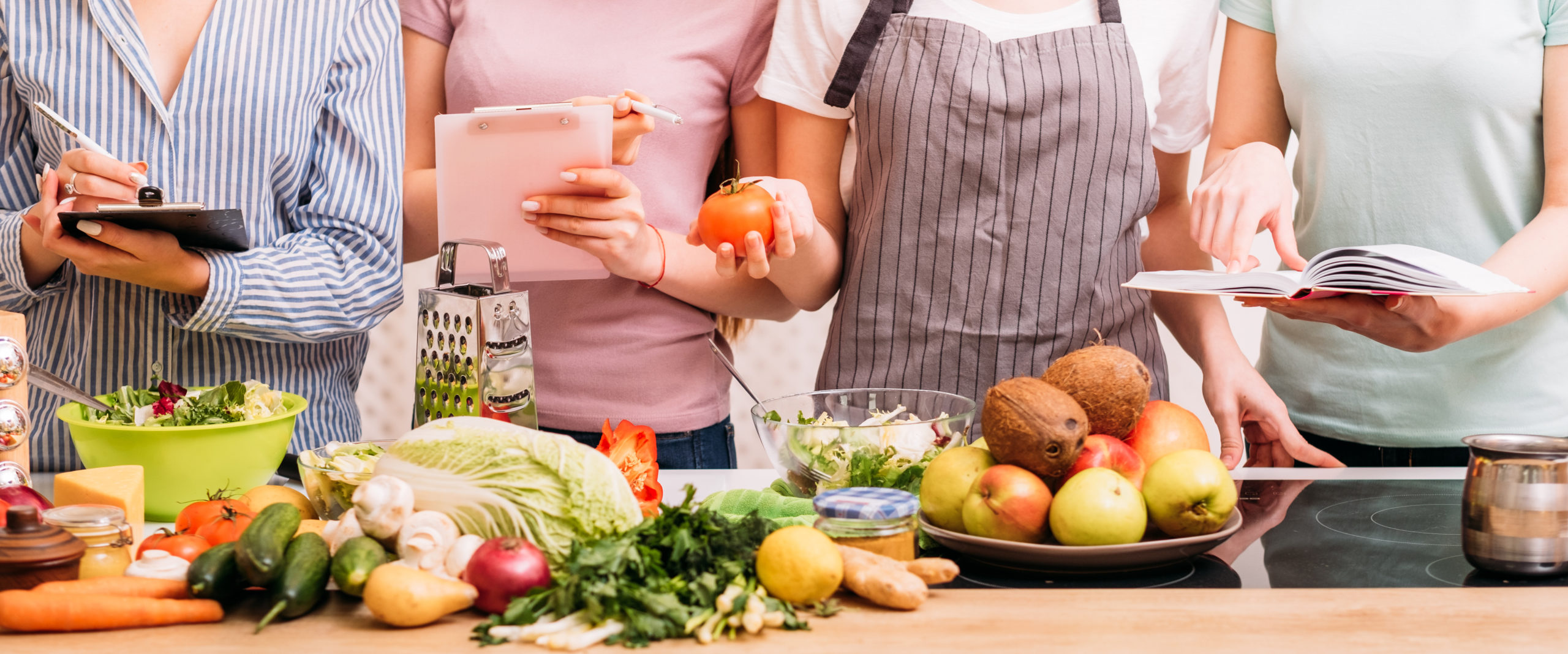Food Combining? We Say No to the Fad and YES to these Nutritious Combinations

Have you heard that combining certain food groups leads to poor digestion? Yeah, we’ve heard that one too, and like we’ve done for other fads, we at F-Factor are here to bust that myth. Want to know why we’re all about combining food groups? Read on for the science you need to know.
THE THEORY
Proponents of “food combining” state that certain food groups take longer to digest than others and require different pH levels for optimal digestion. Therefore, the foods that are digested first then have the opportunity to ferment or “rot,” causing gas and bloating. Because these foods “compete” for digestion, if consumed together, they can cause digestive upset and even toxin buildup.
- Fruit must be eaten alone on an empty stomach
- Never combine protein and starch
- Avoid starch with acidic foods
- Avoid combining different protein sources
- Dairy must be consumed on an empty stomach
THE TRUTH
There is very little, if any, science to this theory. While it has its roots in Ayurveda, we know physiologically that our digestive tract is in fact built to digest multiple foods at once. We have a plethora of enzymes released from the moment food hits our tongue that are designed to break down all different food particles, therefore there is no “competition” for digestion. Additionally, fermentation in the stomach is almost impossible given that bacteria, or the gut microbiome necessary to ferment food, simply can’t survive in the extremely acidic pH of the stomach.
I hate to break it to you, but if you follow these food combining rules, you’re likely missing out on important combinations that can actually improve digestion and support blood sugar. These combinations are also integral to proper nutrient absorption, so don’t shy away from utilizing them.
3 OF OUR FAVORITE NUTRIENT-PACKED COMBOS:
(1) Protein and Fiber
This tried and true combination is the hallmark of F-Factor. Protein and fiber work together to slow digestion, supporting normal blood sugar levels and increasing feelings of fullness [i]. Notice how you’re full and satisfied for hours after a GG pizza? You can give thanks to this combo.
If we were following food combining rules, we wouldn’t be able to combine protein and starch from say, GG crackers. What would our beloved crackers be without their topping? We certainly can’t stand for that. And fruit on its own? It certainly won’t keep you full for long and may even spike blood sugar. We always recommend pairing fruit with protein like cheese, turkey, or a small portion or nuts to help increase satiety and slow absorption of sugar into the blood-stream.
(2) Vitamin C and Iron-containing foods
You know vitamin C is an antioxidant that can help support immunity, but did you know it actually helps you to absorb iron? There are two forms of iron: heme, found in animal proteins like meat and poultry, as well as fish, and non-heme, which is found in plant sources like grains, legumes, and leafy greens (and in the animals that eat them!) but is more difficult for the body to absorb.
Vitamin C containing foods like bell peppers, guava, citrus fruits, broccoli and Brussels sprouts aid in the breakdown and absorption of non-heme iron. For example, adding orange slices to your kale salad will help you to absorb more iron from the kale than if it was eaten alone! This is important to do together in the same meal to facilitate maximum absorption. [ii] Adding these fruits to a salad or even to a dressing is a great way to incorporate this combination into your day.
(3) Vitamin A and Healthy Fat
There are two classes of vitamins, fat-soluble and water-soluble. Water-soluble vitamins, like the various B vitamins and vitamin C, are quickly digested and excreted in the urine. Ever wonder why your urine looks so concentrated after taking a multivitamin? That’s B vitamin riboflavin at work.
Fat-soluble vitamins like A, D, E, and K must be consumed with fat in order to be properly absorbed. Vitamin A is integral for eye health, immune function, and cellular signaling. Plant sources of vitamin A, aka Provitamin A, are carotenoids such as alpha- and beta-carotenes. They can be found in spinach, carrots, winter squash, sweet potatoes, mango, and cantaloupe, and they require fat for proper absorption. Adding a few tsp of olive oil to a salad dressing, or pairing a small sweet potato with salmon high in omega-3’s will help to facilitate optimal conversion to active vitamin A and absorption within the body. [iii]
THE TAKEAWAY
If a way of eating sounds complicated, difficult, or just downright silly, chances are, it is. Keep it simple and fuel your body with the combinations you know work for you. We will always be here to give you the science and bust some myths along the way.
[i]. Martin O. Weickert, Andreas F. H. Pfeiffer, Metabolic Effects of Dietary Fiber Consumption and Prevention of Diabetes, The Journal of Nutrition, Volume 138, Issue 3, March 2008, Pages 439–442, https://doi.org/10.1093/jn/138.3.439
[ii]. James D Cook, Manju B Reddy, Effect of ascorbic acid intake on nonheme-iron absorption from a complete diet, The American Journal of Clinical Nutrition, Volume 73, Issue 1, January 2001, Pages 93–98, https://doi.org/10.1093/ajcn/73.1.93
[iii]. NIH Office of Dietary Supplements. Vitamin A- Health Professional Fact Sheet. https://ods.od.nih.gov/factsheets/VitaminA-HealthProfessional/